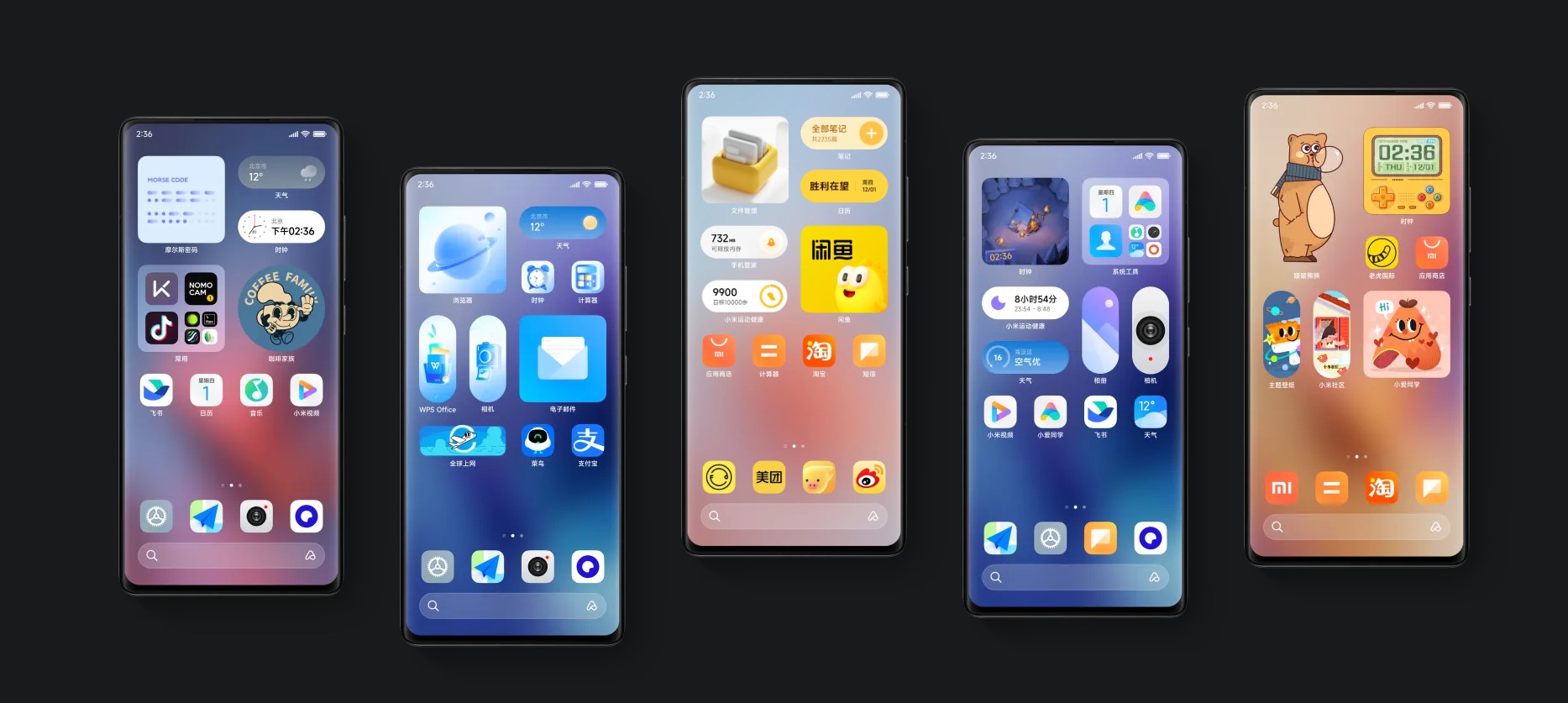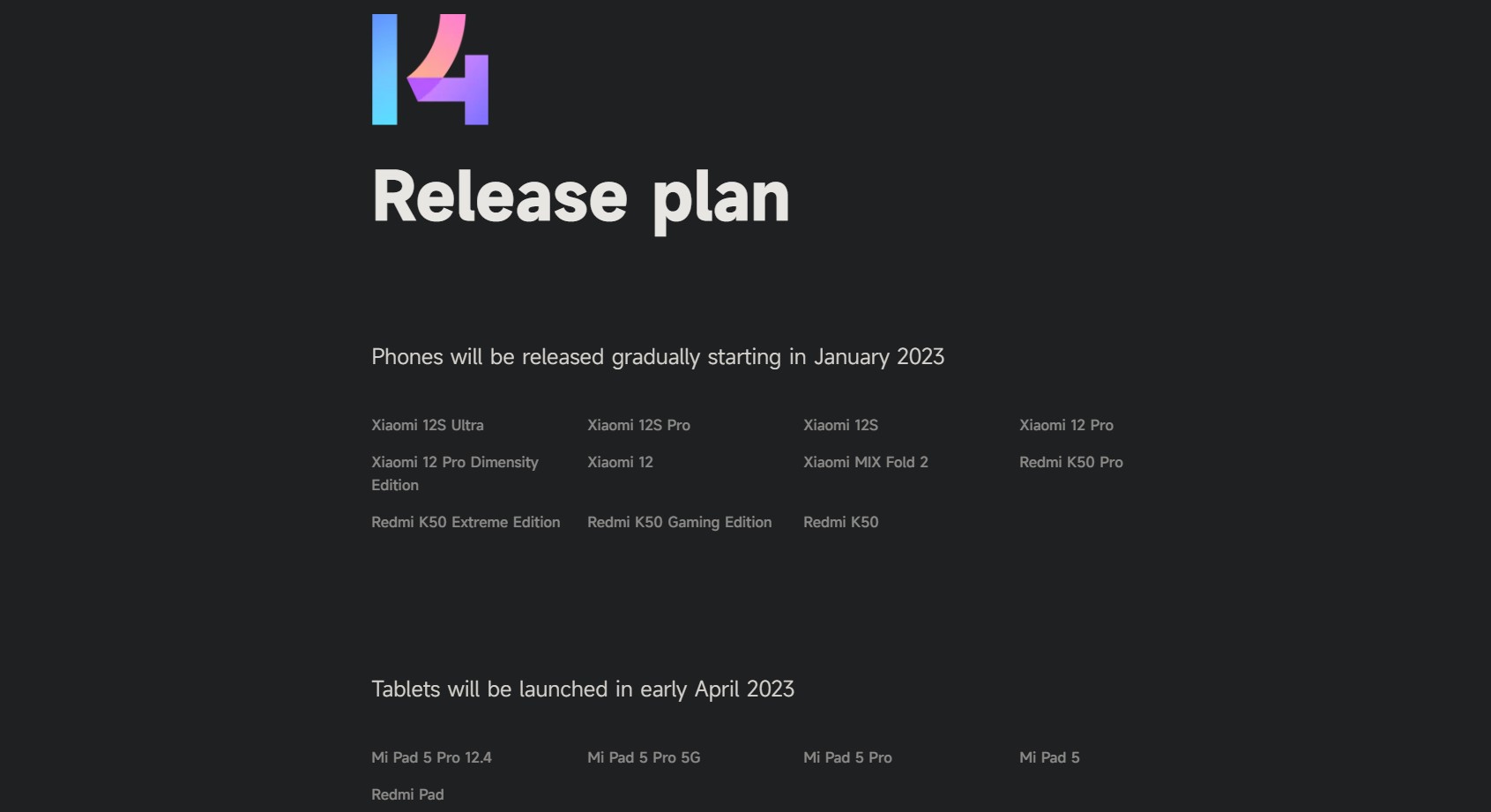We’ve already seen what other manufacturers are doing with Android 13, and Xiaomi has arrived fashionably late to the party with MIUI 14. The latest version of MIUI has been introduced in China, and the first wave of Xiaomi devices will start receiving the update in January 2023.
MIUI 14 doesn’t differ too much from its predecessor, with Xiaomi retaining the design aesthetic it introduced last year. Instead, Xiaomi is rolling out several optimizations and tweaking the system architecture itself so that MIUI runs faster, smoother, and uses fewer resources. This is always a welcome move, and Xiaomi notes that MIUI 14 uses 23% less storage than the previous version. The marginal storage savings may not mean much on devices like the Mix Fold 2, but they’re sure to come in handy on budget phones.
Like previous years, all of Xiaomi’s announcements are aimed at the Chinese market. The global build of MIUI 14 will come at a later point and should have a few additional features and some omissions — like Xiaomi’s digital assistant — but the underlying architecture is the same. So here’s a rundown of the new features in MIUI 14, when your Xiaomi phone will get the Android 13-based build, and what devices are eligible.
MIUI 14: All the new features

I’ll do a more detailed post talking about individual features once I actually use MIUI 14, so for now, I’ll sum up the additions. MIUI 14 is a continuation of the work that Xiaomi has done over the last two years to optimize the interface and make it more fluid. With this version, it uses less memory and consumes less storage, and Xiaomi notes that the fluidity has been increased by as much as 60% when seen against MIUI 13 on the Xiaomi 12S Ultra — a bold claim.

Xiaomi is reaffirming its pledge to allow users to delete MIUI system utilities, and in MIUI 14, there are just eight apps that cannot be uninstalled: Settings, Phone, Mi App Store, Browser, Contacts, Camera, Files, and Messages. MIUI 14 also picks up a feature that automatically compresses the file size for services you don’t use often, so if there’s a game you’ve installed but never got around to, the system will free up some storage.

The feature I find particularly interesting is one where you can disable persistent notifications without too much of a hassle. This has been an annoyance in MIUI, and with utilities like Xiaomi Wear leaving a notification up on the pane whenever a fitness band like the Mi Band 7 is connected, I had to use notification channels to manually disable the notification. MIUI 14 fixes that pain point by making it straightforward to dismiss such notifications.

Data integrity is a big issue these days, and Xiaomi is rolling out better on-device tools to make sure data isn’t sent to its servers for things like translations and transcribing audio. MIUI 14’s text extraction from images and real-time transcription of subtitles in video meetings is done entirely on-device, and it will be interesting to see if this feature is present in the global MIUI 14 version and what languages are enabled — it currently transcribes English text to Chinese.
Xiaomi says the text recognition feature will be available on devices with Qualcomm’s mid-range 7 series and above, and MediaTek’s Helio G80 and above, with the real-time subtitles limited to Qualcomm’s high-end hardware.

Xiaomi is working with third-party app manufacturers to ensure their utilities consume less power with extended use. Given that this is a China-focused build of MIUI 14, you’ll only find services local to the region, but this will likely to be the case with the global MIUI 14 version as well.

On the interconnectivity side, Xiaomi is making it easier to switch devices. The brand makes phones, tablets, and even Windows notebooks, and if you use Xiaomi’s wireless earbuds, you can switch between a phone and notebook or tablet seamlessly — just like what you get with the Galaxy Buds 2 on Samsung’s products.

In a similar vein, you can mirror content between your tablet and notebook, and Xiaomi is even touting mouse and keyboard sharing between the two devices — it will be interesting to see how that works in reality.

On the customization front, Xiaomi is adding new plants and animals avatars that can be added to the home screen. This once again feels like a feature aimed clearly at the Chinese market, and we’ll have to wait and see if it is intact in the MIUI 14 global build.
Finally, Xiaomi is set to introduce an overhaul of its Mi Home service, making it easier to add and control the brand’s extensive smart home portfolio. Xiaomi says it will introduce a new interface for Mi Home and roll out smart devices similar to Nest Hub to control its products. Given that these devices will run Xiaomi’s digital assistant, it’s unlikely they will debut outside China.
MIUI 14: List of eligible devices

Xiaomi hasn’t shared the list of devices that will get the MIUI 14 update at this moment, but it’s easy enough to make a few guesses. The best Xiaomi phones sold under the Xiaomi label will get three platform updates, so the Xiaomi 10T series, 11T series, and the Xiaomi 12 Pro and the rest of the Xiaomi 12 series will be making the switch. Kicking things off will be the latest Xiaomi 12S Ultra and the Mix Fold 2 foldable.
As for the rest of the Xiaomi portfolio, POCO and Redmi devices launched in the last two years should be getting the MIUI 14 update. I’ll update this post once Xiaomi shares the official list, but for now, here’s an overview of the devices that are likely to switch to the Android 13-based MIUI 14:
MIUI 14: Rollout schedule

With Samsung rolling out One UI 5 back in November and the stable builds of OxygenOS 13 and ColorOS 13 already available on several devices, Xiaomi is clearly on the backfoot with its Android 13 rollout. Xiaomi says that the MIUI 14 stable build will start rolling out only in January, and given that this list is aimed at the Chinese market, there’s no telling when global devices will switch to the latest version of Android.
January 2023:
- Xiaomi 12S Ultra
- Xiaomi 12S Pro
- Xiaomi 12S
- Xiaomi 12 Pro
- Xiaomi 12 Pro Dimensity
- Xiaomi 12
- Xiaomi Mix Fold 2
- Redmi K50 Pro
- Redmi K50
- Redmi K50 Extreme Edition
- Redmi K50 Gaming Edition
April 2023:
- Xiaomi Pad 5 Pro 12.5
- Xiaomi Pad 5 Pro 5G
- Xiaomi Pad 5 Pro
- Xiaomi Pad 5
- Redmi Pad
With the Chinese version of MIUI 14 rolling out to users starting in January, there shouldn’t be too much of a wait before Xiaomi decides to roll out the update to global users.
With over 560 million users globally, MIUI is one of the most widely-used Android interfaces in the world, and Xiaomi will be keen on delivering the Android 13-based build to its customers.